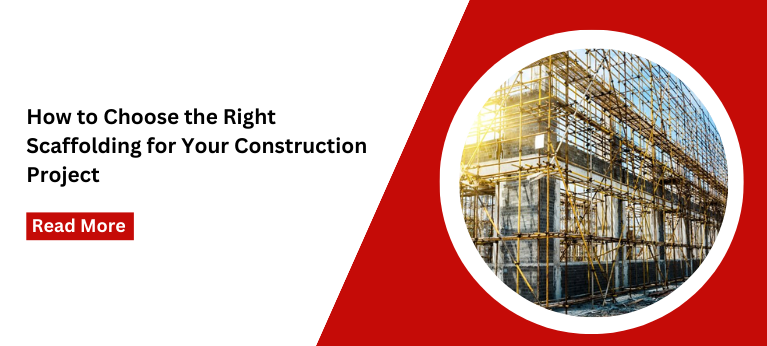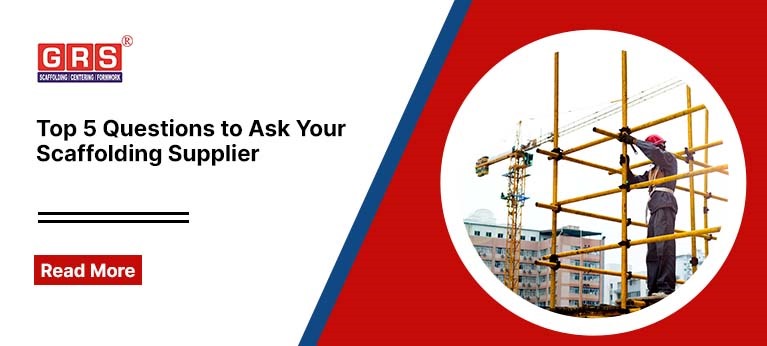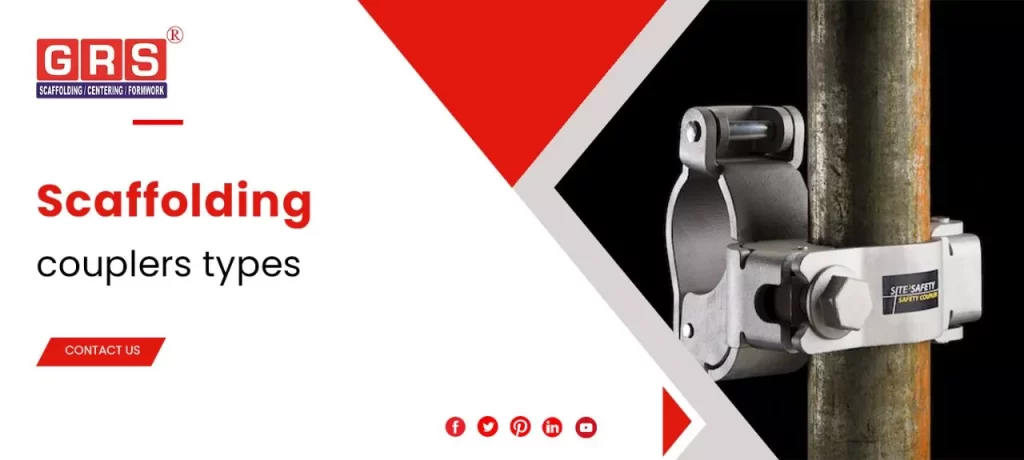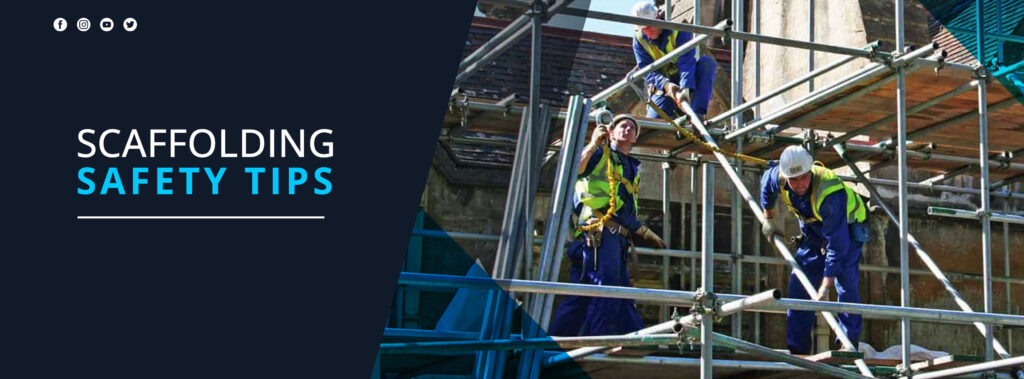When embarking on a construction project, one of the most crucial decisions you will make is selecting the right scaffolding. Scaffolding serves as the backbone of your worksite, ensuring that workers can safely access elevated areas, transport materials, and complete the job efficiently.
With various types of scaffolding available, each designed to serve specific purposes, it’s essential to choose the right one for your project. In this in-depth guide, we’ll explore the key factors to consider when selecting scaffolding for your construction needs.
1. Understand the Scope of Your Project:
Before you can decide on the type of scaffolding you need, you must have a clear understanding of your project’s scope. Consider the following questions:
- How tall is the structure you’re working on?
- What type of construction work will be carried out (painting, bricklaying, electrical work, etc.)?
- How long will the scaffolding be required?
- Will the project face challenging weather conditions?
By answering these questions, you can narrow down your options and determine the best scaffolding solution that matches your project’s specific needs.
2. Know the Different Types of Scaffolding:
There are several types of scaffolding, each suited to different applications. Choosing the right one is key to ensuring safety, efficiency, and cost-effectiveness. Here are the most common types:
a. Supported Scaffolding
Supported scaffolding is one of the most commonly used types in construction. It consists of one or more platforms supported by rigid frames, poles, and brackets. It’s ideal for projects where workers need stable platforms to perform tasks such as painting, bricklaying, or facade work.
Best For:
- Long-term projects
- High-rise buildings
- Stability in challenging environments
b. Suspended Scaffolding
Suspended scaffolding is typically used for projects where the scaffold needs to hang from the top of a structure. It’s suspended by ropes or chains and is commonly seen in window cleaning or high-rise exterior painting.
Best For:
- High-rise buildings where ground-supported scaffolding isn’t feasible
- Short-term maintenance work
c. Rolling Scaffolding
Rolling scaffolding comes with wheels, allowing for mobility across a construction site. This type is beneficial for projects requiring workers to move frequently without having to disassemble and reassemble the scaffold.
Best For:
- Indoor projects like painting and drywall installation
- Tasks that require frequent relocation
d. Cantilever Scaffolding
Cantilever scaffolding is used when the ground is unstable or when there are obstacles that prevent the use of standard supported scaffolding. It is supported by beams fixed into the structure, rather than the ground.
Best For:
- Projects with uneven terrain
- Situations where you can’t install scaffolding directly on the ground
e. Trestle Scaffolding
Trestle scaffolding is mounted on mobile or fixed tripods. This type is ideal for indoor work where minimal elevation is needed, such as painting or installing ceilings.
Best For:
- Low-level work
- Indoor projects
3. Consider the Load Capacity:
Understanding the load capacity of scaffolding is crucial for safety. Load capacity refers to the amount of weight the scaffolding can safely support, including the weight of workers, tools, and materials.
Scaffolding can typically be classified into three categories:
- Light Duty: Supports a limited number of workers with light tools and materials (ideal for painting, plastering, etc.).
- Medium Duty: Handles more significant loads and is suitable for jobs requiring heavier tools and materials, like bricklaying.
- Heavy Duty: Designed for major construction projects where heavy equipment and materials need to be transported across the scaffold regularly.
Selecting the right load capacity prevents accidents, ensures stability, and keeps workers safe.
4. Assess the Height Requirements
Height is another key factor when choosing scaffolding. Depending on the building’s height, different scaffolding systems are more appropriate.
- Low to Mid-Level Projects (Up to 20 Feet): Supported scaffolding and trestle scaffolding are generally adequate.
- Mid to High-Level Projects (20-100 Feet): Rolling scaffolding or suspended scaffolding may be necessary, especially if frequent mobility or hanging platforms are required.
- High-Level Projects (100+ Feet): Cantilever or suspended scaffolding systems are ideal as they provide stability without needing a strong foundation on the ground.
Ensure that the scaffolding you select has adjustable platforms to accommodate varying heights as the project progresses.
5. Safety Considerations:
Safety should be the top priority when selecting scaffolding for your construction project. Ensure that the scaffolding adheres to local safety standards and is built with materials strong enough to withstand project demands. Here are some safety factors to keep in mind:
- Guardrails: Make sure the scaffolding has guardrails to prevent falls from elevated heights.
- Non-Slip Platforms: Choose scaffolding that includes non-slip surfaces to minimize the risk of accidents.
- Proper Bracing: Ensure the scaffolding is adequately braced and secured to prevent tipping or collapse.
- Regular Inspections: Routine inspections of the scaffolding setup are essential to check for any weaknesses or wear and tear.
Hiring a professional scaffolding company that follows strict safety standards can make a significant difference in preventing accidents.
6. Evaluate Weather Conditions:
Kolkata’s weather can be unpredictable, with monsoons, heat, and humidity playing a role in construction projects. Make sure the scaffolding is durable enough to withstand these conditions.
- Wind Resistance: If the project is in a windy location, choose scaffolding with adequate wind resistance features.
- Corrosion Resistance: Opt for galvanized steel or aluminum scaffolding that is resistant to rust in humid climates.
- Protection from Rain: Ensure there are provisions for waterproofing, especially during the rainy season.
7. Consider the Duration of Use
Another factor to consider is the duration of scaffolding use. Will it be required for a few weeks, months, or the entire construction period?
- Short-Term Projects: If the project is relatively short-term, renting scaffolding may be more cost-effective.
- Long-Term Projects: For longer construction jobs, purchasing scaffolding might be a better investment. Look for durable and easily maintainable systems.
Additionally, some scaffolding companies offer flexible rental plans and professional installation services that can save you both time and effort.
8. Choose Between Renting and Buying:
Depending on your project’s budget and length, you’ll also need to decide whether to rent or buy scaffolding. Here’s a brief overview:
- Renting Scaffolding: Best for short-term projects or one-off construction jobs. Renting allows flexibility and saves on maintenance costs.
- Buying Scaffolding: Ideal for long-term projects or if your company handles multiple construction jobs annually. Purchasing is a long-term investment but requires upfront costs and regular maintenance.
9. Professional Installation and Support:
For large-scale projects, scaffolding installation and assembly can be complex. Hiring a professional team for installation ensures that the scaffolding is set up correctly, minimizing risks and maximizing efficiency.
At GRS Scaffolding, we offer both scaffolding rentals and professional installation services, ensuring a seamless and safe setup tailored to your construction needs.
Conclusion:
Choosing the right scaffolding is a critical step in ensuring the success and safety of your construction project. By understanding your project’s scope, height requirements, load capacity, and weather conditions, you can select scaffolding that is both safe and efficient.
Whether you opt for supported, suspended, or rolling scaffolding, always prioritize safety and seek expert advice when necessary.
At GRS Scaffolding, we provide a range of high-quality scaffolding solutions designed to meet the diverse needs of construction projects in Kolkata and beyond. Contact us today for expert consultation and find the perfect scaffolding system for your next project.



